Functions, Sources, Daily requirements, Deficiency Syndrome - Nutrients | 12th Nursing : Chapter 4 : Nutrition
Chapter: 12th Nursing : Chapter 4 : Nutrition
Nutrients
NUTRIENTS
The substances which are
present in the food and consumed in our body for its vital functions are called
nutrients. According to the World Health Organization (WHO), these nutrients
must come from food, and they are vital for disease prevention, growth, and
good health. There are several constituents such as:
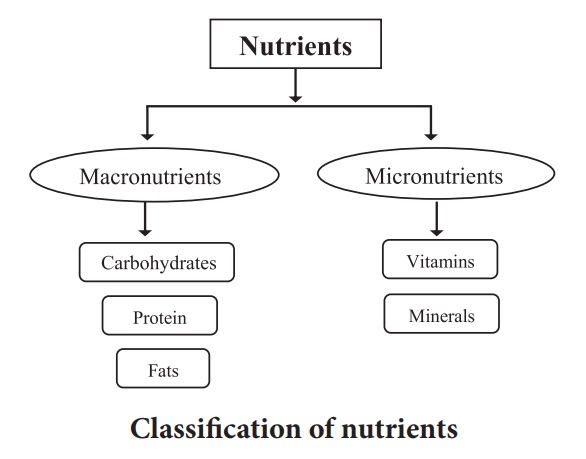
I. Carbohydrates
Carbohydrates are the
chief sources of energy (Providing 4 Kcals/gm). Carbohydrates are cheap and
readily available from food. There are three different kinds of carbohydrates.
They include starch, sugar, and fibre. We do not get calories from fibre
because our bodies do not break down fibre during digestion.
Classification of Carbohydrates
Monosaccharides: these
are the simplest form of carbohydrates containing simple sugar molecule. Example:
Glucose, Fructose and Galactose.
Disaccharides: These carbohydrates composed of two units of
Monosaccharides. Example: Sucrose, Lactose and Maltose.
Polysaccharides: these
are the complex sugars containing numerous units of monosaccharide molecules. Example:
Glycogen, Cellulose and Pectins.
Daily requirements
Carbohydrate intake
should be in the range of 300-500gm (50%- 70%) out of the total energy intake
for adults and 40-60% for children.
Sources: All sugars, jaggery,
honey, pulses, whole grains, cereals, grains, rice, fruits, milk, yogurt, beans,
roots and tubers such as potatoes, beet root etc.
Functions of Carbohydrates
•
Supplies energy
•
Protein sparing function
•
Oxidation of fats
•
Regulating blood glucose
•
Facilitates bowel movements
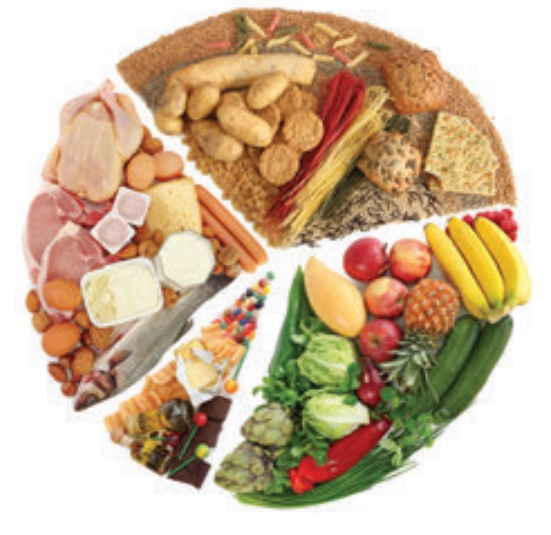
Digestion and absorption of Carbohydrates
Salivary amylase aids
digestion of starch in themouth.Mostofthedigestionofcarbohydrates takes place
in the small intestine. Carbohydrates are absorbed into the blood stream as
glucose, Galactose and fructose. By way of the capillaries of the villi, the
simple sugars enter the portal circulation and transported to the liver.
Dietary Fibre
The carbohydrates (E.g,
pectin, cellulose, hemicellulose) and some non carbohydrates substances (e.g.
lignin) are collectively called as dietary fibre. Fibre is found in vegetables,
fruits and grains. It resists digestion.
Significance of Fibre
High fibre diet plays an
important role in prevention and management of constipation (Inability to pass
motion/ lack of bowel movement)
Fibre also helps to
reduce blood cholesterol
Helps to prevent blood
glucose level after food (Post prandial blood glucose)
II. Proteins
Proteins are the
indispensible constituents of the diet. Proteins are made up of amino acids.
Amino acids are needed for replacement and growth of the body parts.
Amino acids are
classified as essential and non essential amino acids. Essential amino acids
cannot be synthesized by the body and must be taken through foods whereas non
essential amino acids can be synthesized by the body.
Daily requirements
The ICMR recommends 1gm
of protein/ Kg of body weight for adults.
The amount of protein
should be increased for children, pregnant and lactating mothers by 1.5- 2 g/kg
body weight.
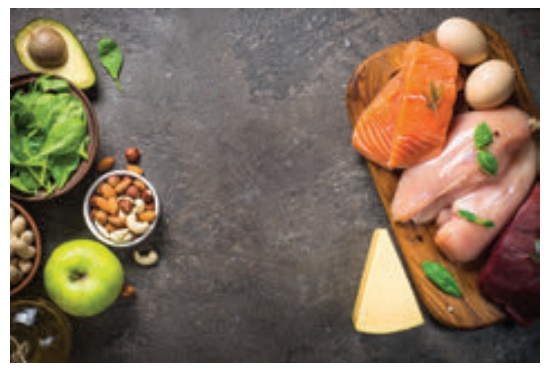
Sources of Protein
Animal sources: eggs, milk and milk products,
fish, meat.
Plant sources: pulses, cereals, dry
fruits, beans nuts etc.
Functions of Proteins
•
Protein helps in synthesis of enzymes, immunoglobulin, plasma
proteins and hormones in the body
•
Protein helps in growth and repair of body tissues
•
Proteins are secondary sources of energy during deficiency of
carbohydrates and fats. (Provides 4 Kcals/gm)
•
Proteins help in forming haemoglobin
•
Proteins help in antibody formation
Digestion and
absorption: The hydrolysis of proteins in the gastro intestinal tract
is accomplished by proteases secreted in gastric juice and pancreatic juice and
also by proteases present in the intestinal mucosa.

III Fats
Fat is deposited as
adipose tissue in the body and perform essential functions in the body. Fats
are composed of fatty acids and contain oxygen, carbon and hydrogen.
Classification: Fats are
classified in to two types:
saturated fat and
unsaturated fat.
a) Saturated Fat: These have full number of hydrogen atoms.
These are from animal sources. Example: butter, Ghee and vanaspati oil.
b) Unsaturated Fat: These contain one, two
or more double bonds of fatty acids. These are extracted from vegetable
sources. Example: Groundnut oil, soyabean oil, sunflower oil.
Daily Requirements
15-20% of total calorie
requirements should be from fat
Sources
Animal sources: Fish, egg, meat,
milk and milk products.
Plant sources: oil seeds
(Groundnut, mustard, cotton seed and coconut oil), nuts.

Functions
•
Supplies energy (9 kcals/ gm)
•
Improve the palatability of food (flavor and taste)
•
Supports body organs like liver and kidneys
•
Provides insulation and thermoregulation against cold
•
Provides essential fatty acids which helps in growth, promotion
and maintenance of skin integrity
•
Helps in formation of hormones in the body
•
Helps in transportation of fat soluble vitamins
Digestion and absorption
There is no digestion of
fats in mouth and very little in stomach. In the small intestine, presence of
fat stimulates cholecystokinin and secretin which further stimulates pancreatic
juice and bile. Food mixes with bile and emulsified. Pancreatic lipase
hydrolyses and yields fatty acids and monoglycerides. These pass to small
intestine and combined with intestinal lumen and absorbed in to blood stream.
IV. Vitamins
vitamins are complex
chemical substances required by body in very small amounts. Vitamins in food
are for the protection and regulation of body functions.
• Vitamins are divided in to two major groups
• Fat soluble vitamins- Vitamin-A, D, E and K
• Water soluble vitamins- Vitamins of B group and vitamin C
Fat Soluble Vitamins
Vitamin-A
The chemical name is
Retinol. Found in foods of both plant and animal origin.
Daily requirements:
0.4-1 mg Sources
Green leafy vegetables
and yellow orange fruits and vegetables like mango, papaya, pumpkins and
carrots are good sources of β-carotene.
Butter, whole milk, egg,
liver and fish are richest sources.
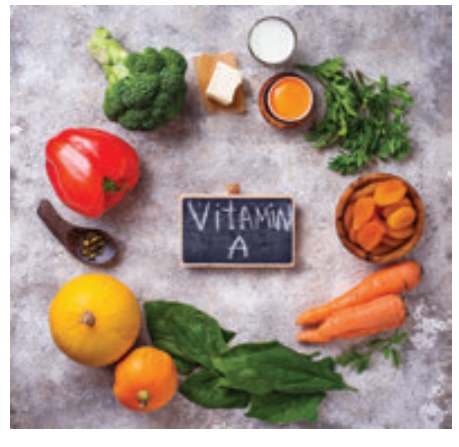
Functions
•
Necessary for the health of the eyes.
•
Maintenance of the normal epithelial tissues of the body.
•
Necessary for growth and proper utilization of protein
Deficiency Syndrome
• Decreased resistance to infection • Dry scaly skin
• Night blindness (Inability to see in dim light)
• Xerophthalmia- dry eye
• Bitot’s spots- Greyish, rough and raised patches on conjunctiva
• Keratomalacia- Softening of the cornea.
• Stunted Growth

Vitamin-D
Vitamin D is
synthesized by sunlight.
Vitamin D is essential
for bone growth.
Daily requirements:
400 IU Sources
Generated in the skin by
action of ultra violet rays of sunlight
Food sources are milk,
butter, cheese, egg, fish and fish liver oils, and foods which have been
fortified by addition of vitamin D.
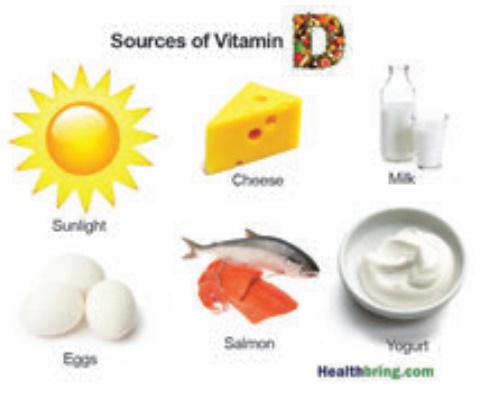
Functions
•
Increases intestinal absorption of calcium and phosphates
•
Mineralization of bones
Deficiency Syndrome
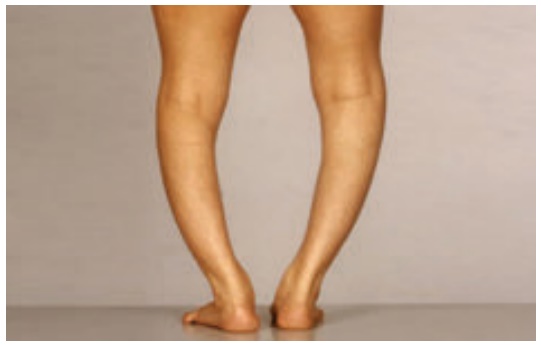
Rickets in children- Bony deformities in growing
children due to defective mineralization of the growing bones. Bones become
soft and bend under pressure.
Osteomalacia- Generalized bone pain in
adults especially in women.
Vitamin E
Vitamin E is an
antioxidant and formed up of chemical substance called tocopherols.
Daily requirements: ICMR recommends 0.8 mg/ g of essential fatty
acids.
Sources
Milk, oils, eggs, leafy
vegetables, papaya, grains, nuts.
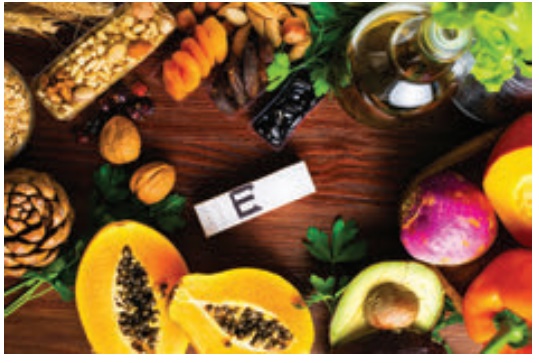
Functions
•
Antioxidant (Prevents the formation of oxidative free radical)
•
Co factor in electron transport
•
Prevents or delays the ageing
Deficiency syndrome: Sterility, muscle
wasting with weakness
Vitamin K
It is otherwise called
as antihemorrhagic vitamin.
Daily requirements
WHO suggested RDA of 55
μg per day for adults.
Sources
Green leafy vegetables, cereals, fruits.
Synthesized by bacteria in gut.
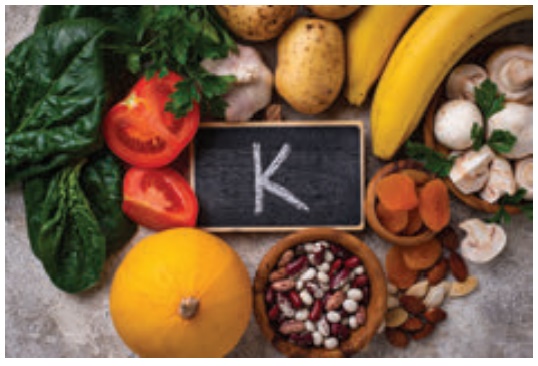
Functions
Important component in
blood coagulation
Helps in formation of
blood clotting factors
Deficiency Syndrome: Alteration in blood clotting
mechanism
II. Water Soluble Vitamins
These vitamins are
essential for many metabolic functions of the body. These are daily required in
diet.
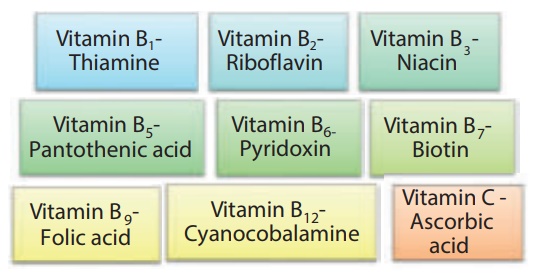
Vitamin B1- Thiamine
Thiamine is essential
for the normal metabolism of carbohydrates and fats. It is necessary for the
transmission of nerve impulses.
Daily requirements: 0.5 to 2 mg
Sources
whole grain cereals,
wheat, ragi, pulses (dhal), vegetables and potatoes, green leafy vegetables.
Meat, fish, liver and eggs.
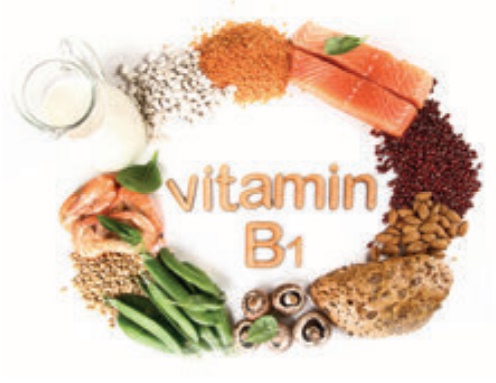
Functions
Helps in carbohydrate utilization.
Maintenance of appetite
and digestion.
Deficiency Disorder
Beriberi- condition in which there
is a severe muscle wasting, growth retardation in children, neurological
disturbances and frequent infection.
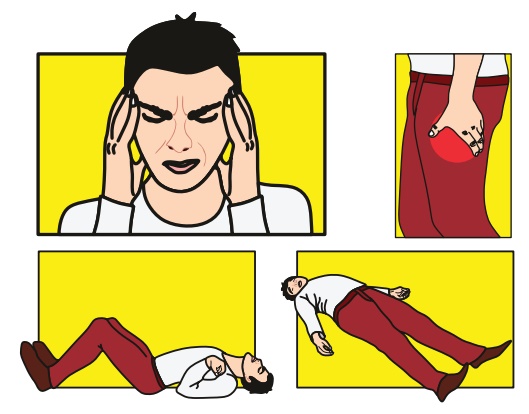
Vitamin B2
Vitamin B2, also known as
riboflavin, is one of the eight B-complex vitamins. It is essential for the
health of skin and for normal vision.
Daily requirements: 0.6 mg/ 1000 Kcal
Sources
Riboflavin is found in
eggs, nuts, dairy products, meats, broccoli, sprouts, wheat germ, wild rice,
mushrooms, soyabeans, green leafy vegetables and whole grain and enriched
cereals and bread. Riboflavin also synthesized by bacteria in intestine.
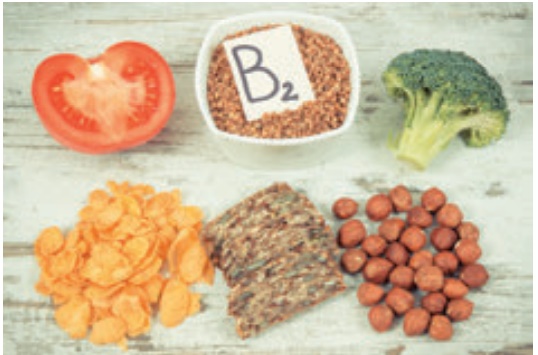
Functions
It helps the body break
down carbohydrates, proteins and fats to produce energy.
It allows oxygen to be used by the body.
Deficiency Syndrome
• Glossitis- Ulceration of the
tongue.
• Angular stomatitis- Cracks at the corner of
the lips.
• Corneal ulceration
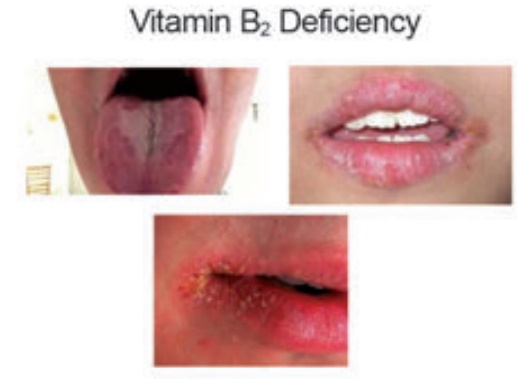
Vitamin B3
Niacin is one of the B-complex
nutrients; it can be synthesized in body.
Daily requirements: 10-15 mg
Sources
Found in appreciable
amounts in liver, yeast, meat, legumes, peanuts and whole cereals.
Foods that are good
sources of tryptophan are animal protein and vegetable protein.
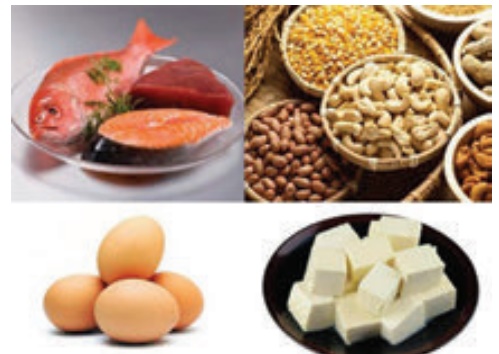
Functions
Helps in normal functioning of skin, intestinal tract and nervous
system
Deficiency Syndrome
1. Pellagra- Three
conditions are
•
Dermatitis -dark, dry and scaly skin
•
Diarrhea- due to atrophy of intestinal wall
•
Dementia-Memory Loss
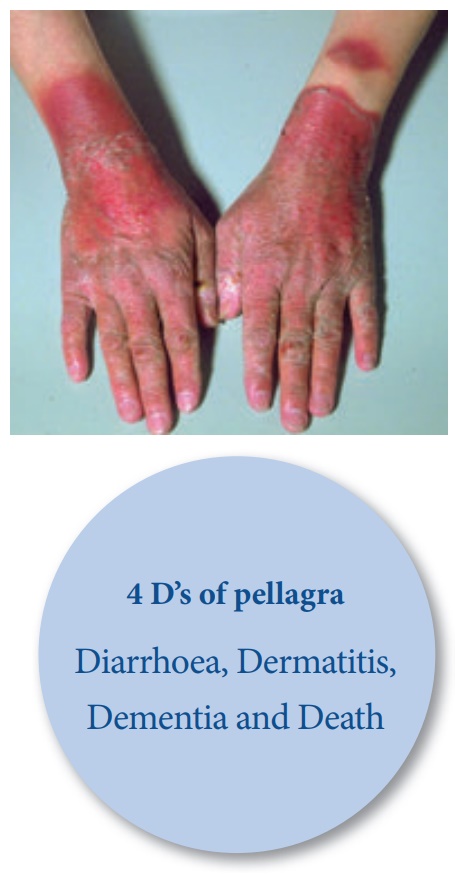
2. Glossitis, mental
disorders
Vitamin B5- Pantothenic acid
Anti dermatitis factor
Daily requirements: 10mg
Sources
Eggs, liver, yeast, many
fish and vegetables.
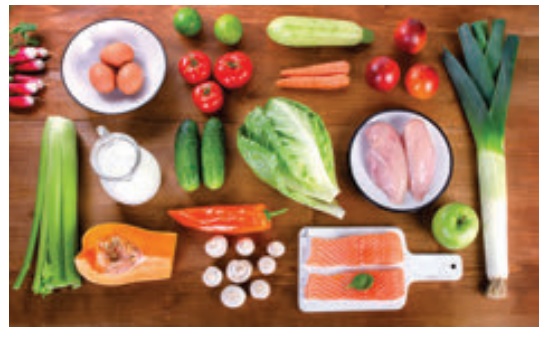
Functions
•
Necessary for metabolic functions
Deficiency Syndrome
Dermatitis, hair loss
Vitamin B6
This vitamin B6is otherwise known as
pyridoxine. It is stored in muscle but found in tissues throughout the body.
Daily requirements: 1.5-2 mg for normal
adults.
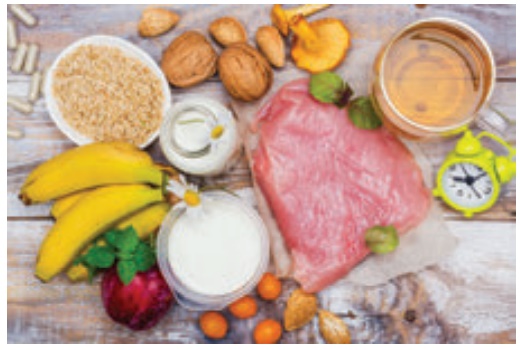
Source
Whole grains, legumes,
bananas, potato, liver, kidney and other meats, fortified breads and cereals.
Sunflower seeds, soya beans, walnuts and yeast are the richest sources of
pyridoxine among plant foods.
Functions
•
Production of red blood cells
•
It is readily absorbed from intestines
•
Improves immunity
•
Improves nervous system function
•
Reduce muscle spasms, cramps and numbness
•
Maintains proper balance of sodium and phosphorous in the body
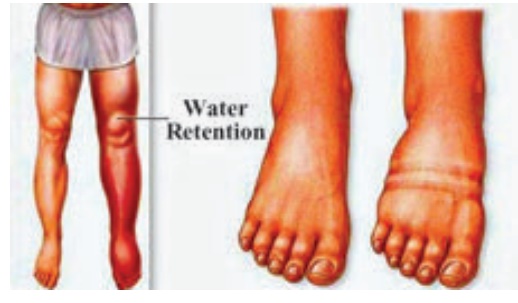
Deficiency Syndrome
Anaemia, nervousness,
insomnia, oedema (Water retention), mental depression. Muscle weakness, tooth
decay.
Arm and leg cramps, Skin
lesions and skin disorder.
Vitamin B7
Otherwise known as
Biotin. It is associated with carbohydrates metabolism.
Daily requirements: Traces
Sources
Egg yolk, liver, kidney,
tomatoes, vegetables, legumes and cereals.
Functions
It is needed for protein
and fatty acid synthesis
Deficiency syndrome: Dermatitis, hair fall.
Folic acid
Vitamin B9 includes both folate
and folic acid and is important for several functions in the body.
Daily requirements: 0.4mg
Sources
Fish, mutton, liver,
egg, chicken, green leafy vegetables, pulses, lentils, beans, sunflower seeds,
beets, broccoli, spinach, orange juice, tofu, fish, meat, fortified cereals,
milk, cheese, eggs, oysters, crab etc.,

Functions
·
Folic acid helps the body to convert carbohydrates into glucose,
which is used to provide energy.
·
Folic acid helps in building of antibodies which prevent and heal
infections.
·
Regulates blood cells formation.
Deficiency Syndrome
• A recent study connected folic acid deficiency with autism
• Megaloblastic anemia
• Sterility
• Low birth weight babies
• Congenital defects in the child- cleft lip and cleft palate
Vitamin B12-Cyanocobalamine
This vitamin is
destroyed by heat.
Daily requirements: 1-3 μg
Sources
Foods of animal origin,
also synthesized by bacteria.
Functions
·
DNA Synthesis
·
Stimulates and promotes maturation of RBC’s
Deficiency Syndrome
• Pernicious anemia
• Infertility
• Neurological and mental disturbances
Vitamin C
Vitamin C is also known
as ascorbic acid.
It is an antioxidant and
water soluble vitamin.
Daily requirements: up to 40 mg
Sources: Citrus fruits (amla,
guava, lemon, orange, tomato), green leafy vegetables.
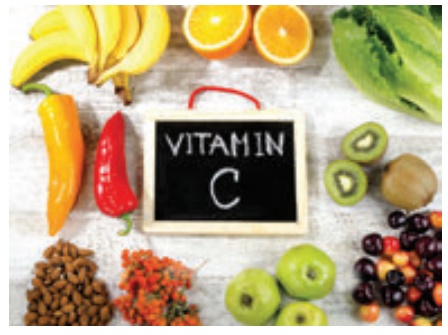
Functions
·
Helps in wound healing
·
Prevents bleeding
·
Antioxidant
Deficiency Syndrome
Scurvy- Painful swelling of gums
and joints. Multiple hemorrhages specially in gums, skin and mucus
membrane Delayed wound healing.
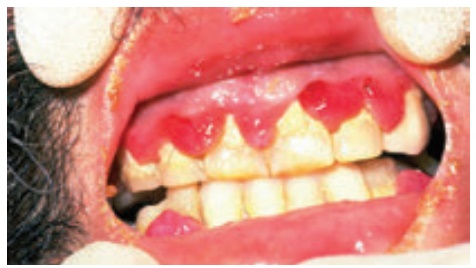
V. Minerals
These are the inorganic
compounds in micro quantities which are essential for many vital functions of
the body. The minerals constituent of the body amounts to 4.3 to 4.4 %, largely
in the skeleton.
General Functions of Minerals
As constituents of hard
tissue. (eg.) calcium and phosphorus in bone and teeth.
As constituents of soft
tissue. (eg.) Sulphur and phosphorus.
As constituents of
substances assisting in the regulatory function of the body (eg.) salts in
solutions influence nerve and muscle action.
Some of the essential
mineral salts are sodium, potassium, calcium, phosphorus, magnesium, iron and
iodine.
Calcium
Calcium is most
important for children and pregnant women.
Calcium is important
component in bones and enamel of teeth. 99% of body calcium is found the bones.
Sources: milk and its products,
green leafy
vegetables, bones of
meat, fish, pumpkin, coconut, dry fruits, cereals.
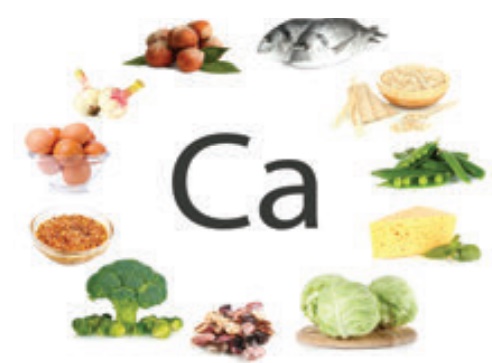
Daily requirements: 400- 500mgm
Functions
·
Formation and maintenance of bones and teeth
·
Coagulation (Thickening) of blood
·
Muscle contraction
Sodium
Sodium is essential for
many body activities. It is taken in the diet as salt.
Sources: Common salt, sodium
chloride is also found in certain foods like fish, meat, eggs and seasoned foods.

Daily requirements: 8-10 gms
Functions
·
It helps in transmission of nerve impulses
·
Maintenance of body fluids and electrolytes balance
·
Smooth functioning of nerves, muscles and body cells
Potassium
Most of the potassium
present inside the cells.
Sources: Fresh vegetables, citrus
fruits, milk, guava and amla.

Functions
·
Involved in various biochemical activities of the cells.
·
Transmission of nerve impulses.
·
Maintenance of electrolyte balance and contraction of muscles.
Daily requirements: 2-5 gms
Phosphorous
Most of the phosphorus
present in the bones as inorganic form. Few amount resent inside the cells.
Sources:
Whole grain cereals and
flours,
legumes, oatmeal,
cheese, nuts, fish
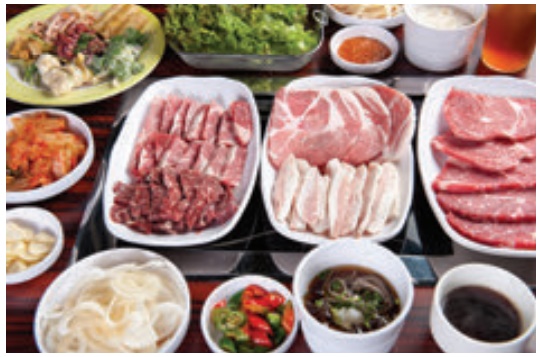
Functions
·
Gives rigidity to bones and teeth
·
Regulates pH of the blood and urine
·
Important in energy metabolism
·
Phosphorus compounds are necessary for carbohydrate metabolism and
for the calcification of bones and teeth
·
Needed for transport of fatty acids
Iron
The amount of iron
present in the adult human body is very small, but it is very important
substance and essential for the maintenance of life. 75% of total body iron
present in the blood.
Sources: Liver, meat, fish, eggs,
cereals, pulses, green leafy vegetables, dry fruits, jaggery, certain beans.
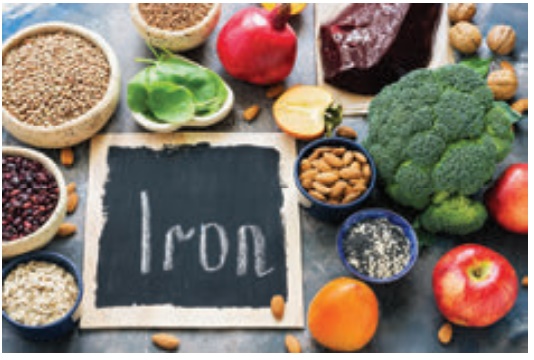
Daily requirements: 25-40 mg
Functions
·
Component of hemoglobin and myoglobin
·
Helps in oxygen transport and cellular respiration
Iodine
Iodine is considered as
an important for maintaining metabolic rate.
Sources: Iodized salt, salt water
fish, milk, meat cereals and green leafy vegetables.
Fortification of common
salt with potassium iodate is a recommended method of making iodine easily
available.

Daily requirements: 01.05 mg
Functions
·
Iodine is an important constituent of thyroxine, the hormone
secreted by the thyroid gland
·
Iodine is responsible for the regulation of physical growth
Magnesium
Human body contains
about 25gms of magnesium. Half of it is present in bones and in combination
with phosphate and carbonate and about 1/5th in soft tissues.
Functions
Constituent of bones and
teeth, coenzymes in general metabolism, smooth muscleaction.
Sources of Magnesium: Dairy products (excluding butter) fresh
green vegetables, meat, nuts, sea food and legumes are good sources of
magnesium.
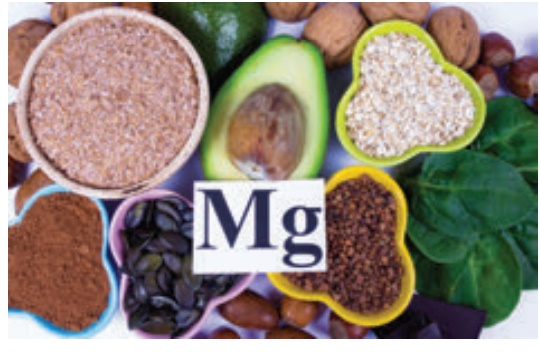
Other Inorganic Elements
Copper: Functions with iron in
the formation of haemoglobin.
Manganese: Has a similar effect
though less marked than copper.
Cobalt: It is present in vitamin
B12 which is also necessary
for the formation of haemoglobin.
Zinc: Is found mainly in
pancreatic tissue and may have an important part to play in the storage
of insulin in the gland.
Clinical Significance of Minerals
·
Calcium: Deficiency of calcium in the body precipitates rickets in
the children and osteomalacia in adults.
·
Iron: Reduced level or lack of iron causes anemia, certain
hormonal changes in women.
· Iodine: Lack of iodine in the body leads to enlargement of thyroid gland called as goiter.
VI. Water
Water is an important
component with diet as it performs many vital functions in the body and hence
is a part of balanced diet. Water makes up to 70% of total body weight inhuman
beings. Water should be taken in enough quantities to prevent dehydration.
Distribution of Body Water
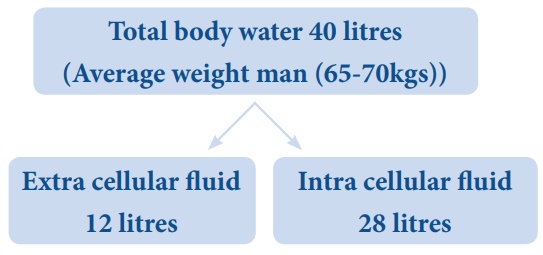
Functions of Water
·
Water is a major constituent of blood and tissue fluid
·
It helps in transport of many substances from one compartment to
another
·
Provision of the moist internal environment required by all living
cells
·
Participation in all the chemical reactions occurring extracellularly
and intracellularly
·
Regulation of the body temperature
Related Topics
